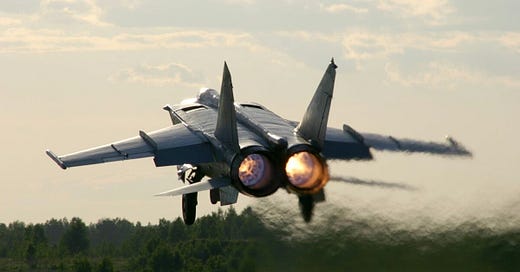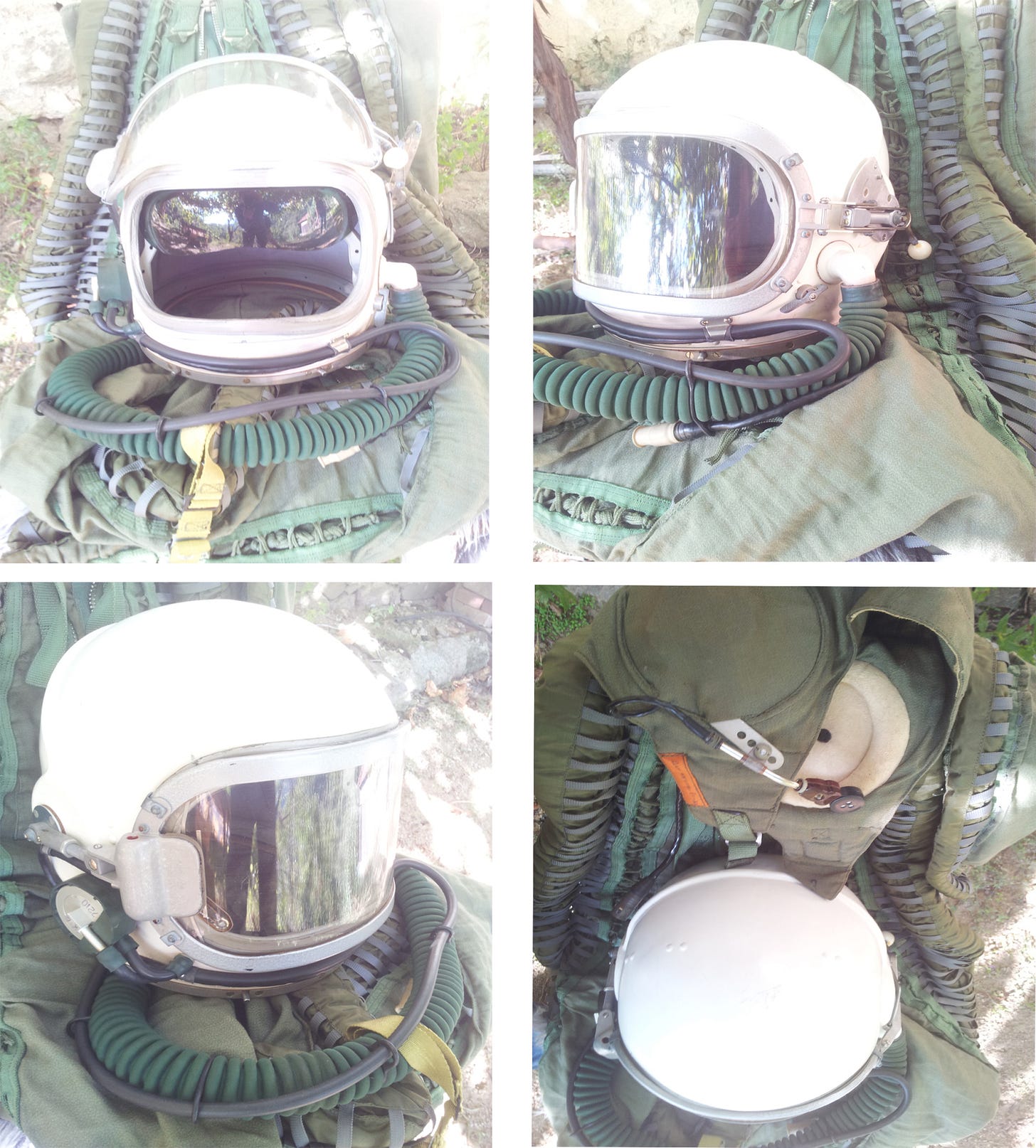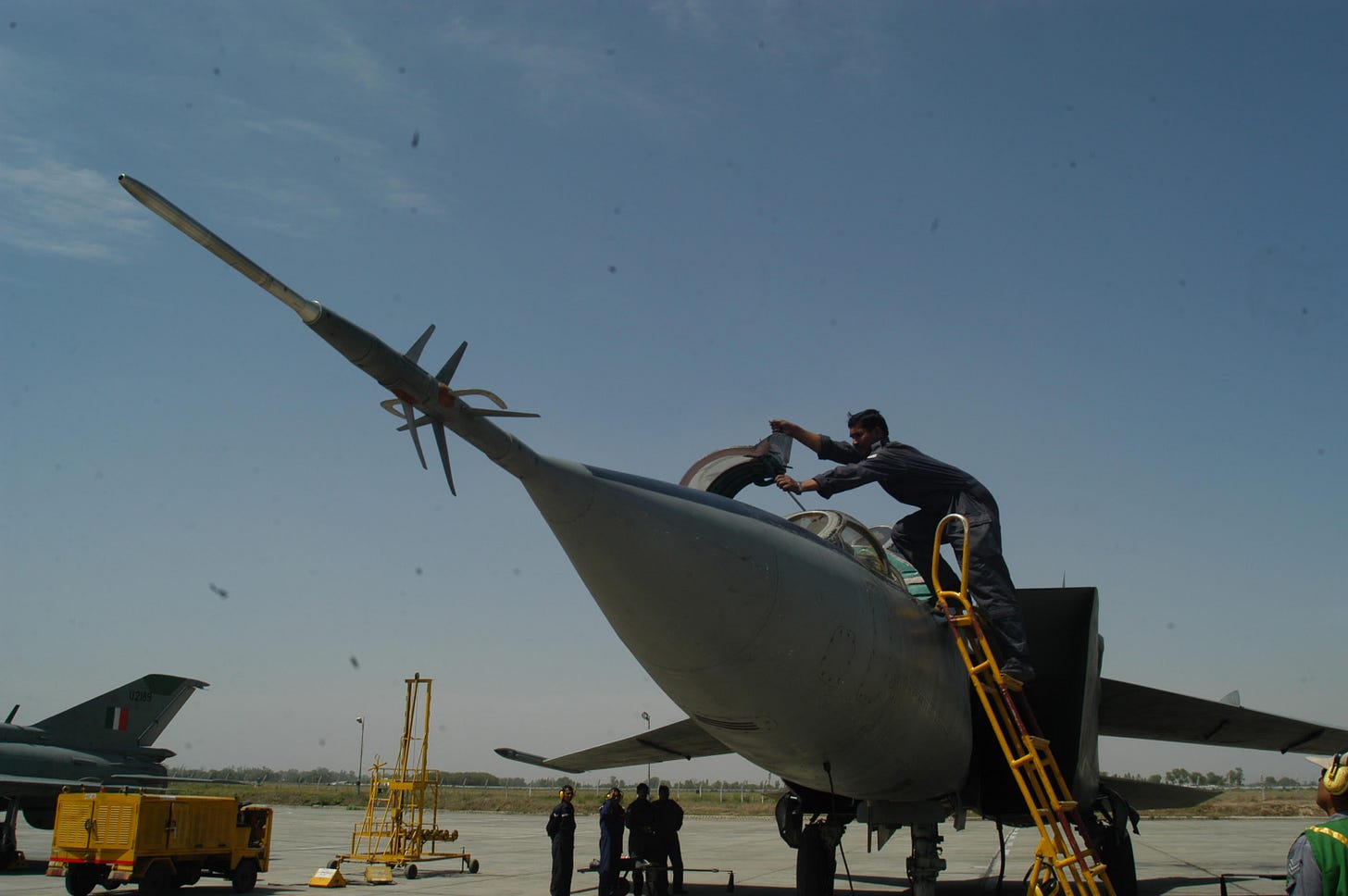High-flying, insanely fast and untouchable, the MiG-25R Foxbat served the Indian Air Force with aplomb. Air Marshal Sumit Mukerji spoke to Hush-Kit about flying the world’s fastest operational aircraft.
‘The Foxbat operated covertly, seen just as a blip on the radar among other flying aircraft, but one blip would suddenly disappear
‘
What were your first impressions of flying the MiG-25R?
A 20-ton aircraft that carries 20 tons of fuel, flies in the stratosphere, cruises at Mach 2.5 in minimum afterburner and exceeds Mach 3.0 with ease when required – what can one say? It was an awesome aeroplane. The fact that the ventral fuel tank was one MiG-23 [equivalent in fuel] under the belly, speaks for itself.
l
Which words best describe the MiG-25?
Catch me if you can.
What is the cockpit like and how pilot-friendly is it?
Most Russian aircraft cockpits evoke a feeling of comfort and familiarity to a pilot who has flown Russian aircraft before. Coming from the MiG-21 to the MiG-25R was an easy transition. As one of our air chiefs remarked when the aircraft was demonstrated to him and he was stepping into the cockpit, ‘This is rather familiar. And, dammit, it even smells the same!’ The cockpit was a little more spacious than the MiG-21; thankfully so, because we operated wearing a pressure suit (which, incidentally, was the same as that worn by Yuri Gagarin).
The two-seater – or ‘trainer’ version – was unique; it is the only aircraft I know (other than the Tiger Moth, I guess) where the trainee sits in the rear seat. The design, to my mind, was an aeronautical engineering masterpiece. To put it rather simplistically, the camera block was removed from a single-seater and a cockpit created in that space. The canopy, although the same as the other cockpit, appeared ‘flush’ with the nose of the fuselage, as viewed from the rear cockpit. Thus, the trainee felt he was sitting in a single-seater when in the trainer. The transition to going ‘solo’ was a piece of cake. With the nose-wheel located behind the rear cockpit, a 90-degree turn onto a taxi track entailed the front cockpit extending over onto the grass beyond the track (at the ‘T’) before the turn was executed. A little unnerving, initially, for anyone (though airline pilots may not have felt uncomfortable).
What can you say about the performance of the MiG-25?
It was a beast with immense power. It has been described by some as ‘an engine with a place for a pilot and some avionics’. The Tumansky R-15B engines each provided more than 10 tons of thrust to produce the desired performance. In almost all the other aircraft I have flown, a regular climb is executed at constant TAS [True Air Speed: the speed of the aircraft relative to the air mass in which it is flying], with a progressive reduction of IAS [Indicated Air Speed: the speed as shown on the airspeed indicator] as the altitude increases. The Foxbat climbs at constant IAS with an increasing TAS, crossing abeam the take-off dumb-bell (if a reciprocal turn were to be executed after take-off) at 30,000 feet and increasing! She would be crossing 20 km [65,000 feet] in 6.5 minutes from wheels-roll, at a rate-of-climb of 100 m/sec [almost 20,000 ft/ min] – like a bat out of hell,
Keep reading with a 7-day free trial
Subscribe to Hush-Kit Aviation Newsletter to keep reading this post and get 7 days of free access to the full post archives.






